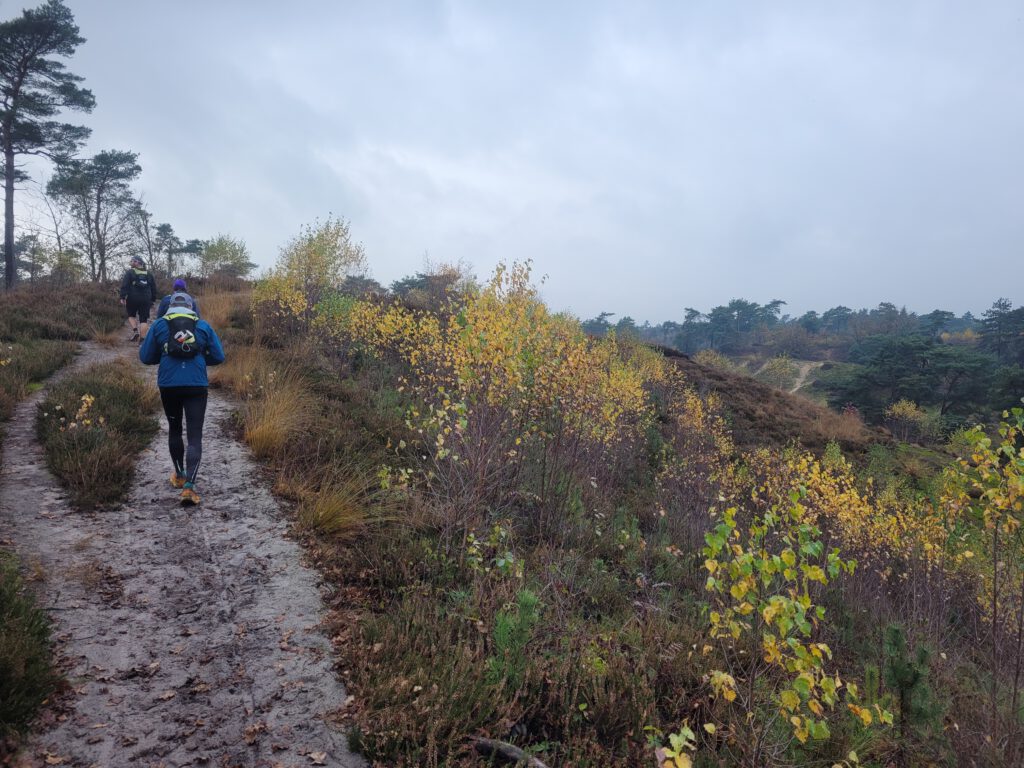
Who expects the librarian to tear up books while running? A loosely Barkley Marathon-inspired trail of over 58 km in the Meuse valley.
Saturday morning, half past four, time to get up for a drive to Limburg with running buddy Simone. Around 5.30-5.45 she and her husband Tobias would pick me up. As a slow starter – who also has to check everything in the morning and mix the drinks for the road – I had to start early. On the menu was the Maasdal MarathonsThis is a 56 km run, inspired by the Barkley Marathons. Not a straightforward run, but more of an experience. Curious about the concept, as a northerner I went along with Simone from the south (Noord-Brabant).
For those who do not know the Barkley Marathons, I recommend watching the documentary (there are many about this race by now) ‘Barkley Marathons: the race that eats its young’. The idea is more or less as follows: in an inhospitable area in Frozen Head State Park, you have to complete a course of around 100 miles within 60 hours; the course is divided into five loops and does not go on the beaten track and roads, but straight through heavy terrain, with lots of altitude gain, the necessary blackberry bushes and of course you do part of it at night. The race starts after race director Lazarus Lake lights a cigarette, and it is not clear when that will happen. Then the participants have to walk the loops and prove that they have actually covered the distance by tearing pages from books hidden along the route. How many books there are is not known in advance. It goes without saying that there were few finishers on the course (only 55 percent of the races were completed). And if some do make it, the route will be tougher the following year.
Would Cor (slogan: ‘Cursing at Cor’) and Geraldine make it as hard as they did? That seemed unlikely to me. In the Netherlands, it is not at all possible to make such an inhospitable course. Even if it were possible, the foresters would inevitably intervene. But I was curious about the implementation.
Eating now?
By now it was not yet 7 o'clock and we were somewhere halfway between Pijnacker and Horst. But despite the breakfast, the blood sugars were already too low. I was obviously starting to get worried, given the experiences of the last few days. Two white buns, 1 Snickers and a whole packet of Sultana later, things started to look up. Just before the start, I decided to take the Generation Ucan starch drink as well, although the blood sugar was slowly rising. It was a bit high at the start, but it went well.
Before the start, Cor explained the rules again and gave a paper with instructions on where to find the books. We were also all given a plastic trumpet, which gave me a bit of a rash as a Northerner (and later almost a wound because of the abrasive string), but Simone loved it. As a non-carnival celebrant, I had to get used to it and I am afraid I am the only one who did not use it. Traditionally, during the Barkleys, the ringing of the Bügel is also the sign that someone has dropped out of the race. Here, the thing served more for a cheerful note to encourage each other (except for petulant Northerners, who only get stressed by the sound). As most of the runners came from below the rivers, it sounded as if someone was trying to strangle a pond full of ducks when Cor and Marcel lit the cigarette and we were off.
White beans
I had chosen the footwear for the day on the off chance that Cor had picked out some really tough terrain. After all, when you are walking in a river valley, especially after the floods, you never know what kind of mud you will encounter. Consequently, the King MT’s were allowed to go on the road again. It's a bit like walking on tractor tyres: no matter how thick the mud – whether or not it is covered with leaves – they don't budge. And the Velcro strap keeps them securely in place even in absorbent mud.
However, it soon became apparent that in reality we did not need such mud samples. The woods and fields looked lovely. Not very swampy, but on some parts a lot of autumn leaves, which was a beautiful sight. So Simone and I could start the run very relaxed.
We expected to find our first book at about five kilometres. I had only read the paper briefly and thought I would find it near a couple of ‘white trees’ (birches, in other words). Simone, however, was talking about ‘white beans’. We picked up the paper and indeed, it said beans with an n. So we were looking around us when we walked through a field of bushes. No idea what a bean plant should look like. But we found nothing and by now the field was already a few hundred metres behind us. Guess where we eventually found the first book... So you see, sometimes we want to read all sorts of things into something and it's just a spelling mistake. This also reminds me of the escape room that I once couldn't get out of with a couple of colleagues. We tried to reason too much and couldn't get out. If we had just tried ineffectively, we probably would have succeeded, it turned out when we got the solution.
Exercises
A few kilometres later, we heard another deafening serenade of ducks in distress. The number of refreshment stations was quite large: there was one every 10 km or so, which is quite a lot for an ultra. They were probably not only there because of the food, but also because there was a page to collect here.
These pages’s were not hidden. Instead, we always had to choose between two exercises to earn the page. Whether that works as a concept, I don't know. The first post involved five squats, the third six lunges with a bar (which I guess I did wrong) and the fourth was to solve a task or do 2-minute planks. Most of these tasks are hardly strenuous for runners, although it certainly helps if you are an experienced long-distance runner. If not, you might have some problems with flexibility.
The attentive reader will already have noticed that there was no physical task at the second supply point. That point was at the ferry near Broekhuizen. To get across the water, we had been instructed beforehand to bring a souvenir from our own region. At the Barkleys themselves, you take a number plate from your state that you hand in beforehand when you participate for the first time. In the Netherlands, of course, number plates are not allowed to be used separately from the car and they are not region-specific, which is why it probably became a souvenir here. Beforehand, I feared that the souvenir would have to be taken to the ferry (20 km away), so I opted for a lightweight regional product: a Delft Blue owl on a book. It seemed appropriate given the books on the trail, and of course it's funny since I'm a librarian. A souvenir all the way from my own place was unfortunately not really an option. A gerbera or an orchid would probably not survive 20 km in the back of a racing jacket.
A bridge too far
Although the exercises on the way were not very difficult, and the route was also very friendly up to now, there came a point where it was a little less easy for me. We arrived at a stream that had to be crossed. But there was no bridge, only a few slippery tree trunks that you could climb over. Simone dared to do so, a bit more clumsy and less tough (damage and shame has taught me a thing or two) Ike was hesitant. So we first looked a bit further, where there was a flooded bridge, but that was even less stable. So we walked back. And I hesitated... until a large group of other runners came along and I became even more stressed...
In the end, I decided to walk around. It was a bit back to Thermae 2000, but I knew that there was a better (and more beautiful) path near the mission chapel; I was surprised earlier that we did not enter it but ended up at this point through a fence that had been cut. Indeed, I have walked that stretch before, during my Summer running holiday on the Meuse-Niederrhein pathand it connected nicely with the route.
A bit of a shame, but that's how it is. After all, the original Barkley Marathons is not a fixed route either. There too, you make choices about where you can run best. And then a kilometre around is sometimes a better idea than through a bramble forest or river.
Step on it
The disadvantage of my kilometre detour was of course that Simone had already moved on to the other entry. And the Maasdal Marathons is really a run that is not about running fast, but about having a good time. Then the grumbling fear monger soon comes to mind that those pages’s can be stolen from him (you only need them if you want to do an extra loop at the end) and that he'd better pick up some speed to reduce the difference.
Just when I wanted to put an audiobook on, Simone called. She and René and Wouter were already at the next book. I don't think that should be too far away. So I went a bit faster again. In the distance, I saw three slow-moving runners, near the war memorial where the book was. Could that be them? I decided to take my page anyway.
I soon caught up with the group, but unfortunately it was not Simone, René and Wouter. I saw them walking in the distance a little later. Because the next post was close by, I knew that that would probably be OK. So I took a little rest and grabbed some water... and then pulled out the water hose. Nice and handy again, and of course it put me further behind.
Blood and salt
I was so glad to see the others again at the supply post. I managed to catch up with them after all. And then there was another but. In the bushes near the bridge, and earlier in a meadow, I got stuck in the brambles here and there. As one of the few people without long trousers – far too warm in this weather – I ended up with some bloodstains on my legs. And at the care centre, they were worried about a larger spot near my heel. That spot had to be cleaned and rubbed with betadiene (I am a big consumer of betadiene in Limburg). I didn't feel a thing and thought it was unnecessary, but it's good that they take the job seriously. Afterwards, my feeling turned out to be right: after cleaning, there was not much to see.
Until now, I had also kept my blood sugars relatively high. Perhaps a little too high, but it ensured that I had all the power available. When another postal worker tried to offer me salt because I was looking white, I realised that the speed had slowed down a bit in the last few kilometres. And indeed, I did not need salt but sugar (in the form of cola and M&M’s at the post office). All in all, it therefore took a while before I was able to keep up with the others again.
Napoleon, Hannibal, and their armies
The really beautiful parts of the path were still to come, according to Cor. We soon found out what he meant by that. After the post, we continued on our way quite calmly, and we had to: the paths were sometimes simply untraceable or invisible.
At one point, Wouter and I were walking on one track that might be a path, and René and Simone on another parallel track. Even little Napoleon would never have crossed our path with his army, according to René. But I swear it really was a path. Big enough for Hannibal with the elephants. Until it came to an end and we had to cross over.
These kinds of pieces came more and more often. Of course, that fits in perfectly with the Barkleys-like experience. It is more like: follow the route to the next point, you know more or less where you will end up (although we ran the route on gpx, which is of course forbidden in the Barkleys). In my opinion, this is a more successful sporty touch than pushing up at a service station.
Although it was very pleasant with Wouter and René, I did not quite manage to keep up with their speed in terms of walking and running. Average speed might have been good, but the speed was too high on the separate parts and that made me a bit tired. So Simone and I decided to walk together (thanks Simone, I know you can run faster).
Study well
In the meantime, it was slowly getting dark. I was a bit shocked when I looked at my watch and saw that I had been walking for the same amount of time as during the Miradaltrail, but that without the altitude metres and food problems, I would not have got as far in that time. Of course, it is also a different type of run, with small assignments, uncharted areas, etc. And here I walked much more relaxed together with Simone. The camaraderie is worth more than a good time. But of course we had to be in before 17.00 if we wanted to take part in the extra victory loop.
After eating a large quantity of M&M’s at the last service post (blood sugar down to 18 mmol/l but no food needed for the last 12-13 km), we picked up the pace again, only to have things go wrong. I was chatting away and overlooked a tree root. Flat on my face and pain in my right calf due to a sudden tightening of that muscle. Would I become the runner who does not make it to the end after all?
Fortunately, everything turned out better than expected. When running, I always felt it a bit at the start after a quiet bit, but once we got up to speed, everything was smooth again. As a result, we arrived in time at the forest café where the finish line was.
Victory lap
After counting our pages ’s – or rather the pulp that was left of them – we could decide whether we wanted to do the last loop. And why not? The objective this time was simple: collect the pages at the watchtower and at a bird hide. To do this, just walk left before the cycle path into the forest, and you will find them.
Simone and I walked quietly out in the direction of the forest. But where would that tower be? I could not see it on the Garmin map. And for a long time we discussed whether to use Google Maps. In the end, we took a path where runners came from and Simone also saw maps for cyclists on the posts. We went right for the watchtower!
According to Geraldine, we should have seen that watchtower hundreds of metres before. But it started to fog and it got dark very quickly. The lights also reflected on the fog, which limited our visibility. Fortunately, we arrived at the tower, where not much later Frank and Saskia also arrived. They had already had the bird-watching opportunity and could give us an idea of where it was located near the lake.
Fortunately, we found the post relatively easily. However, the forest was getting darker, so we decided to take an easier way back along a ‘road’ according to Google. This took us from the viewing hut to the finish in 1.2 km. A lot faster than the original route we had followed! Nevertheless, we were still in time to have dinner in the Boscafé; walking makes you hungry.
In short, it was a very successful day. For me, all the exercises and horns need a little less, but I am probably a small minority in that respect. And it does have its uses (nice Protestant thought): it makes for a good atmosphere and that is the most important thing about a trail or this one. Don't walk it alone, I would really give it as a tip.
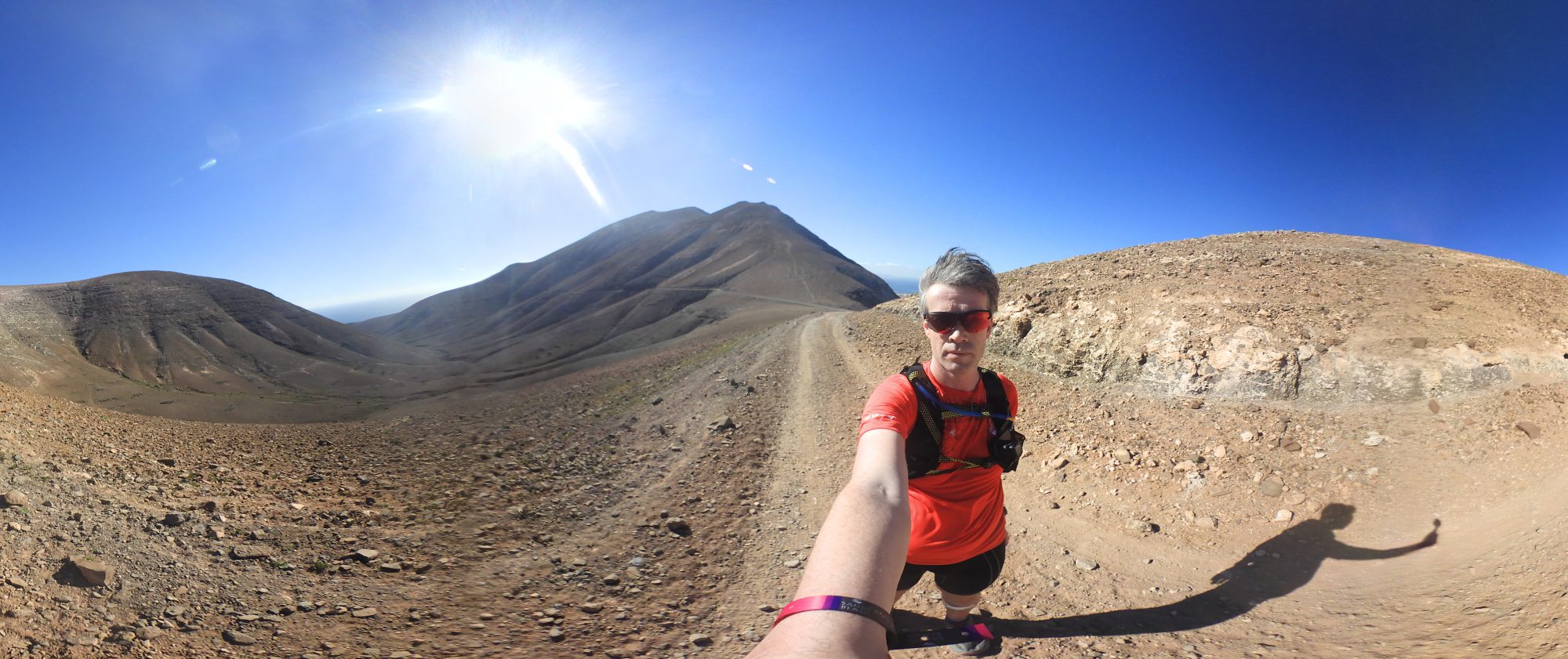
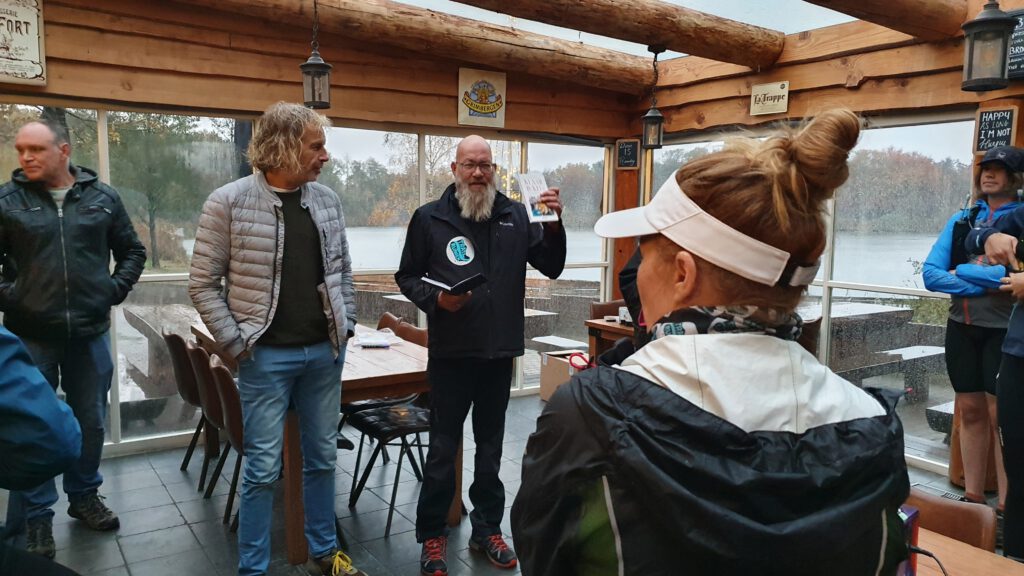
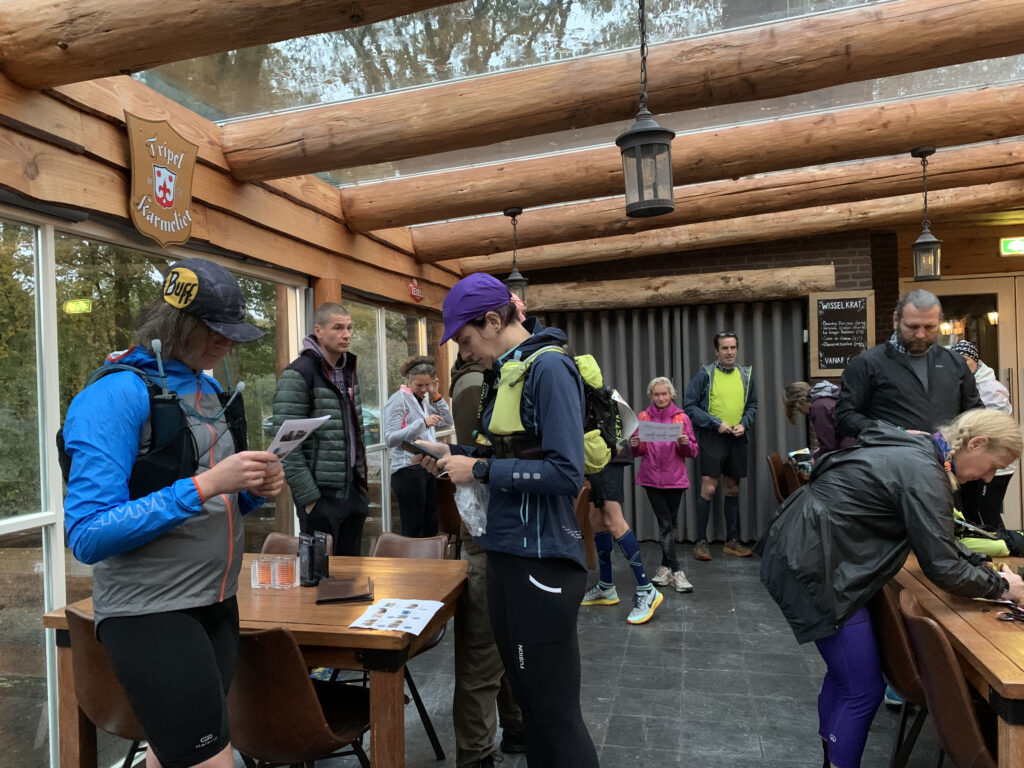
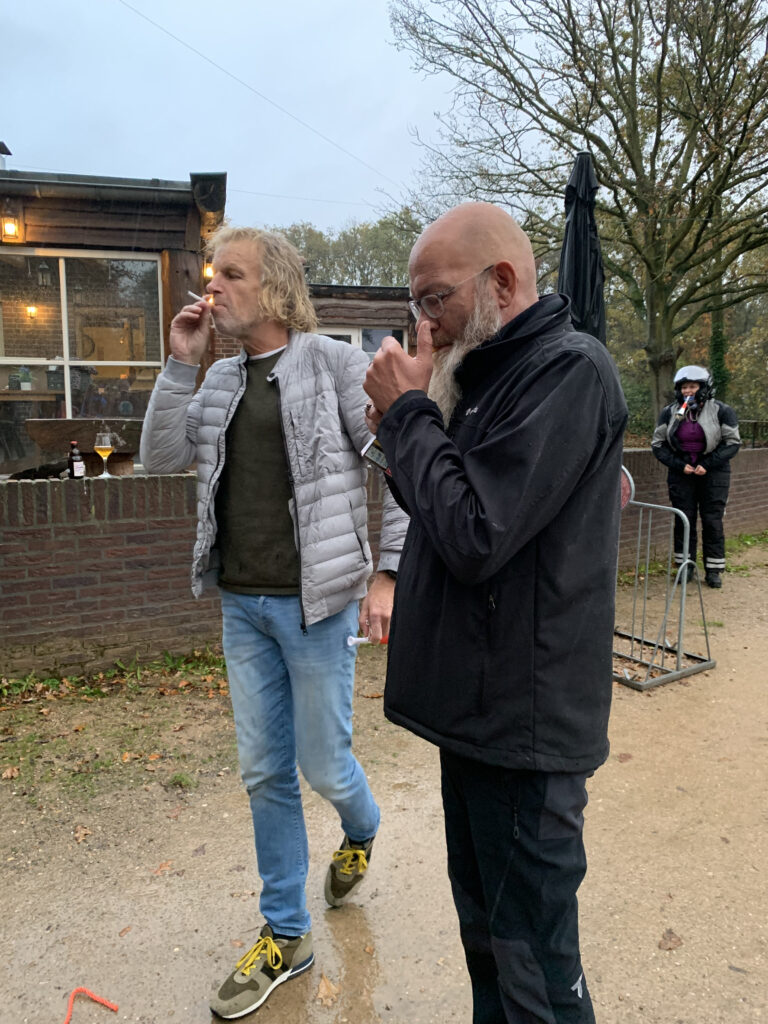
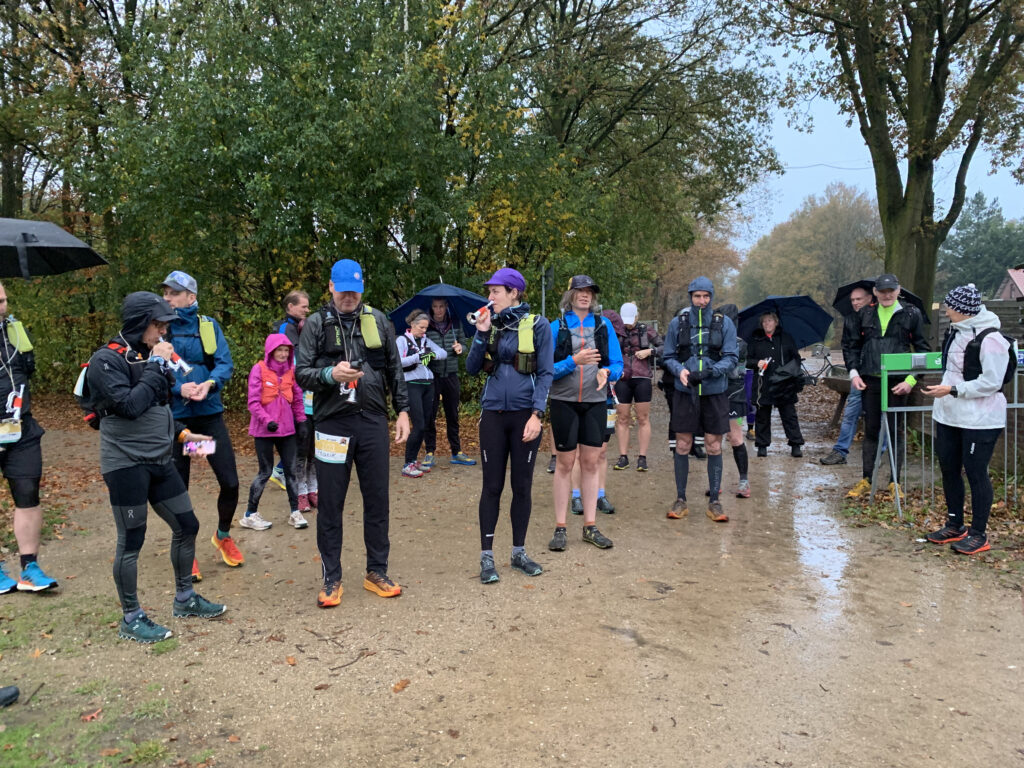
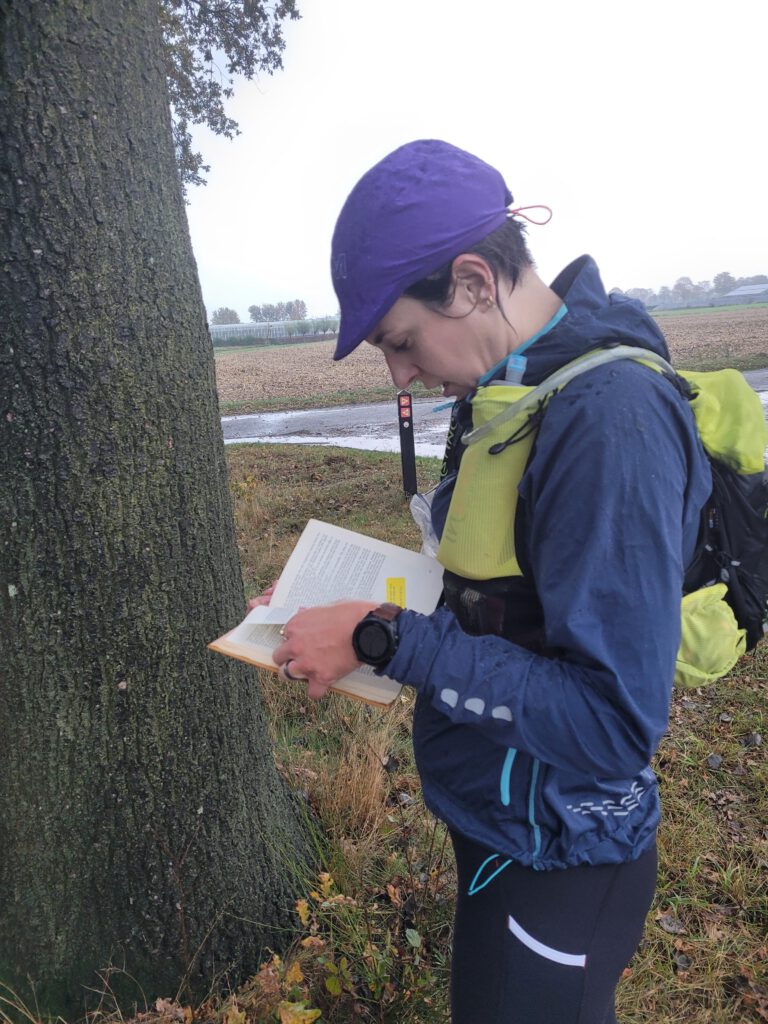
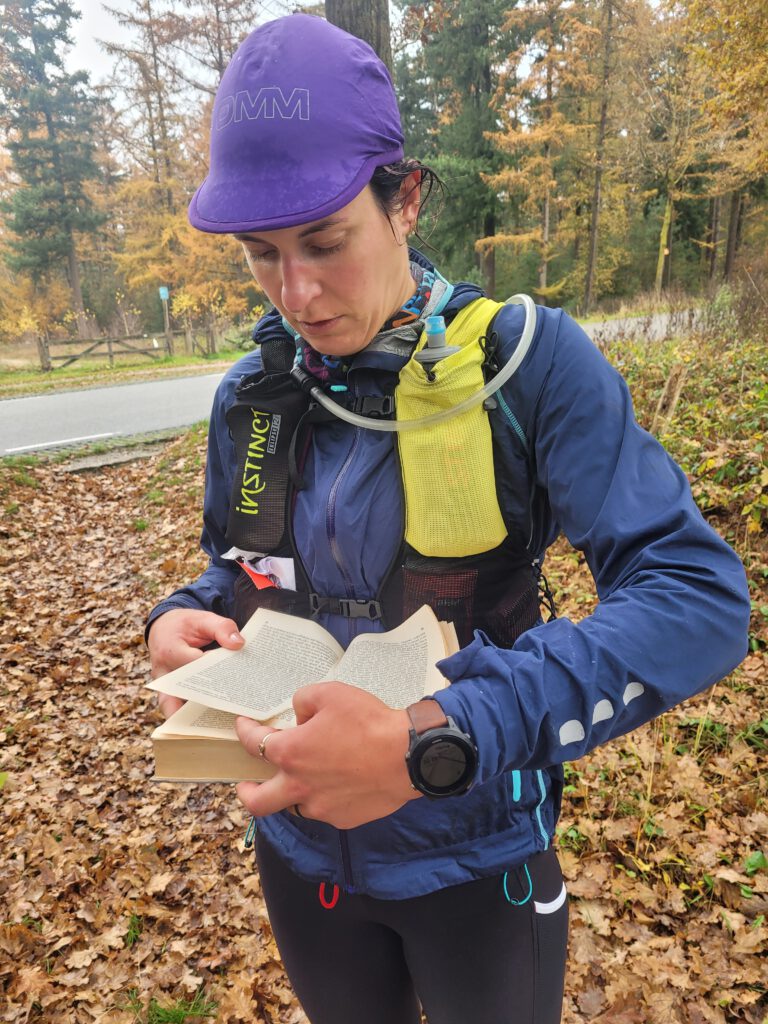
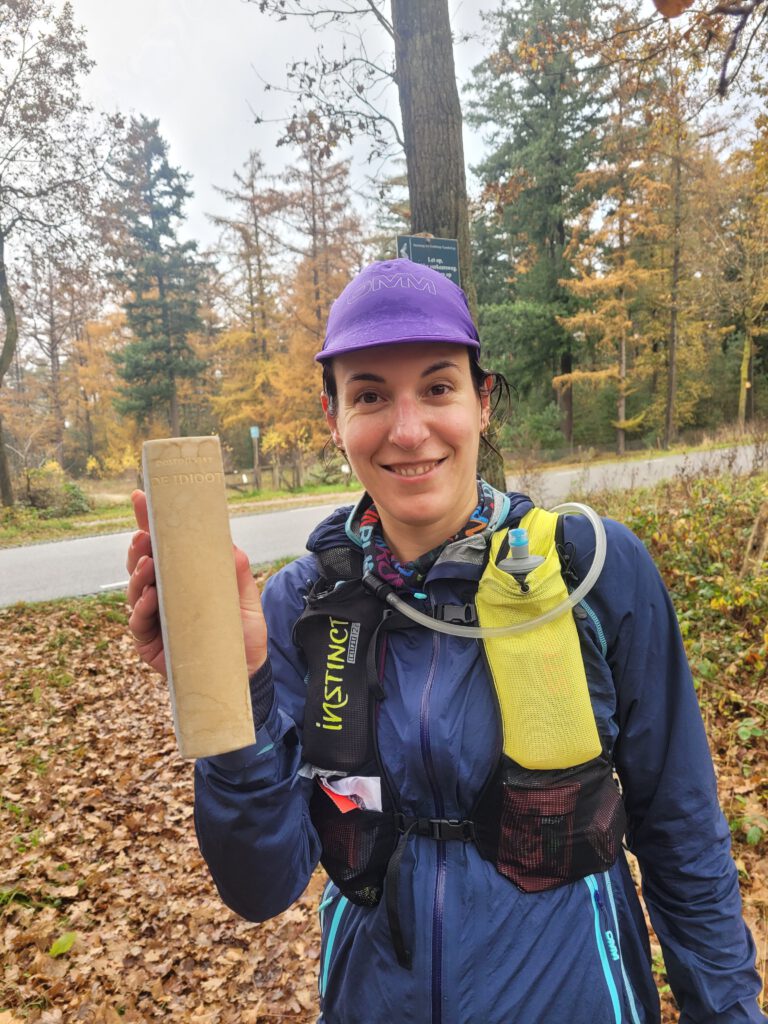
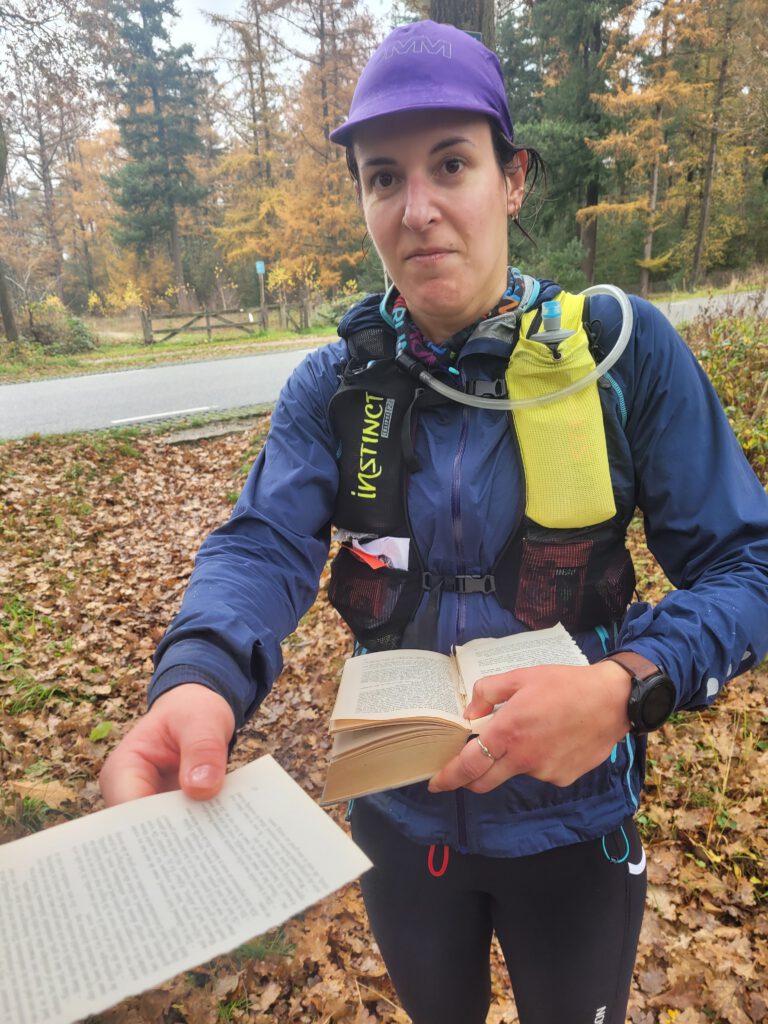



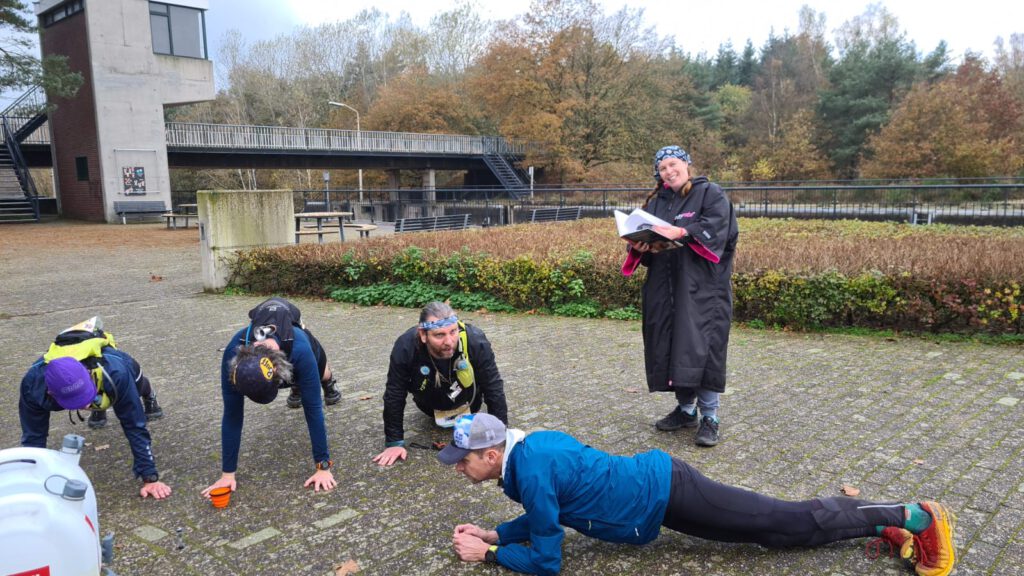
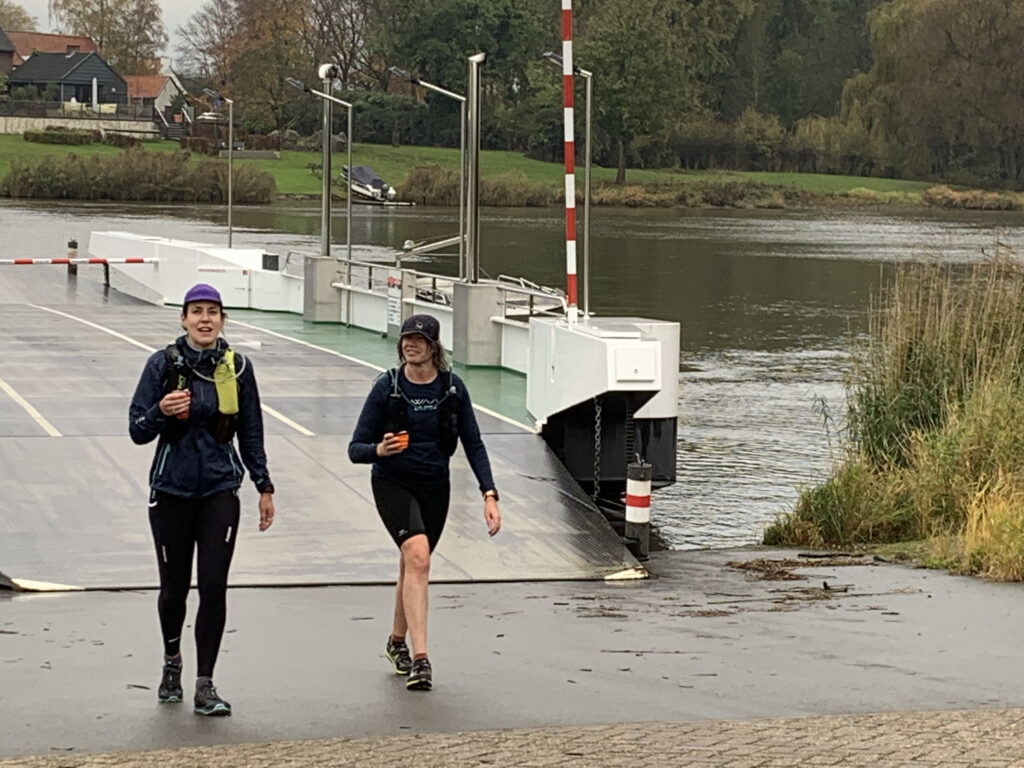

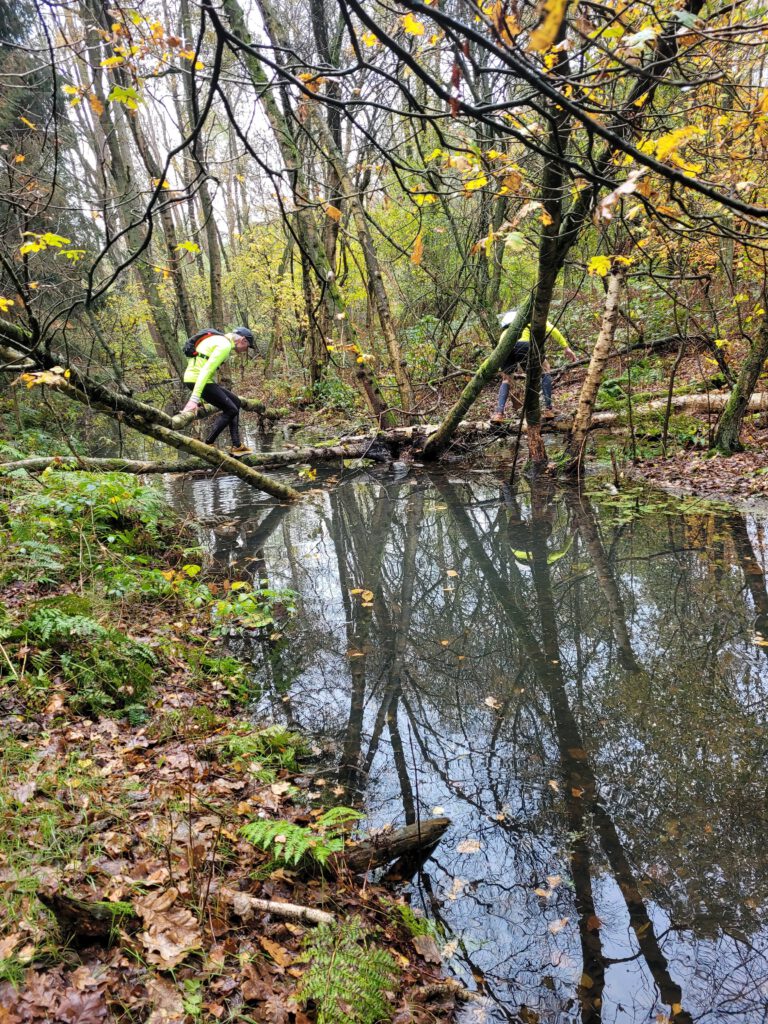
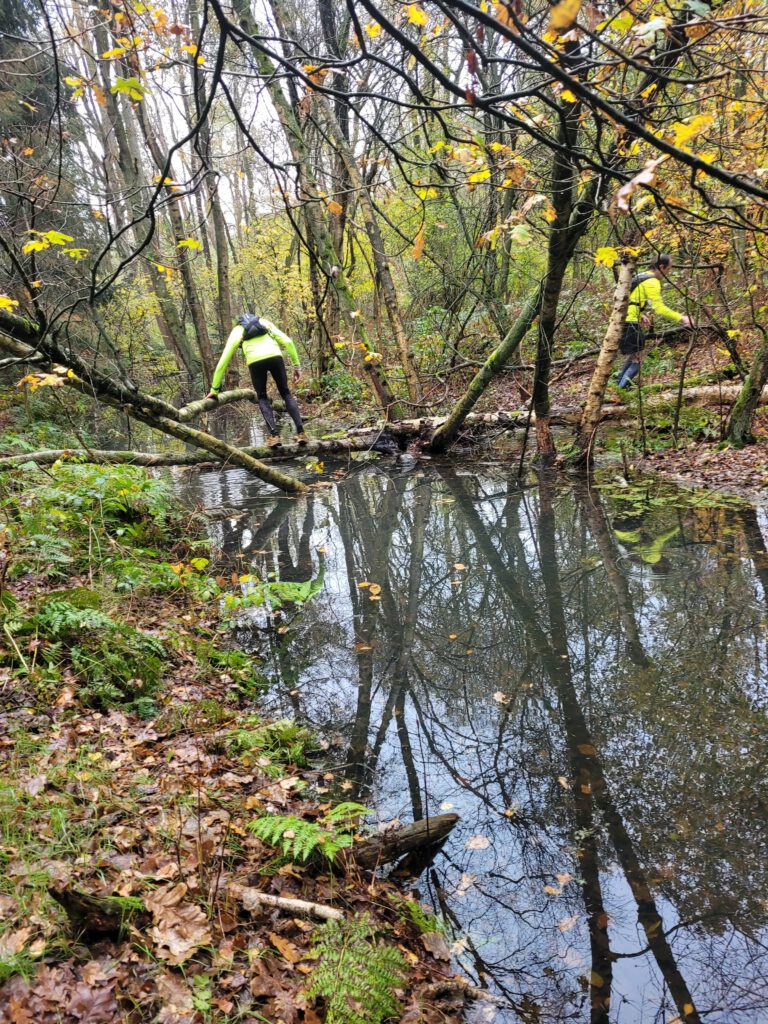
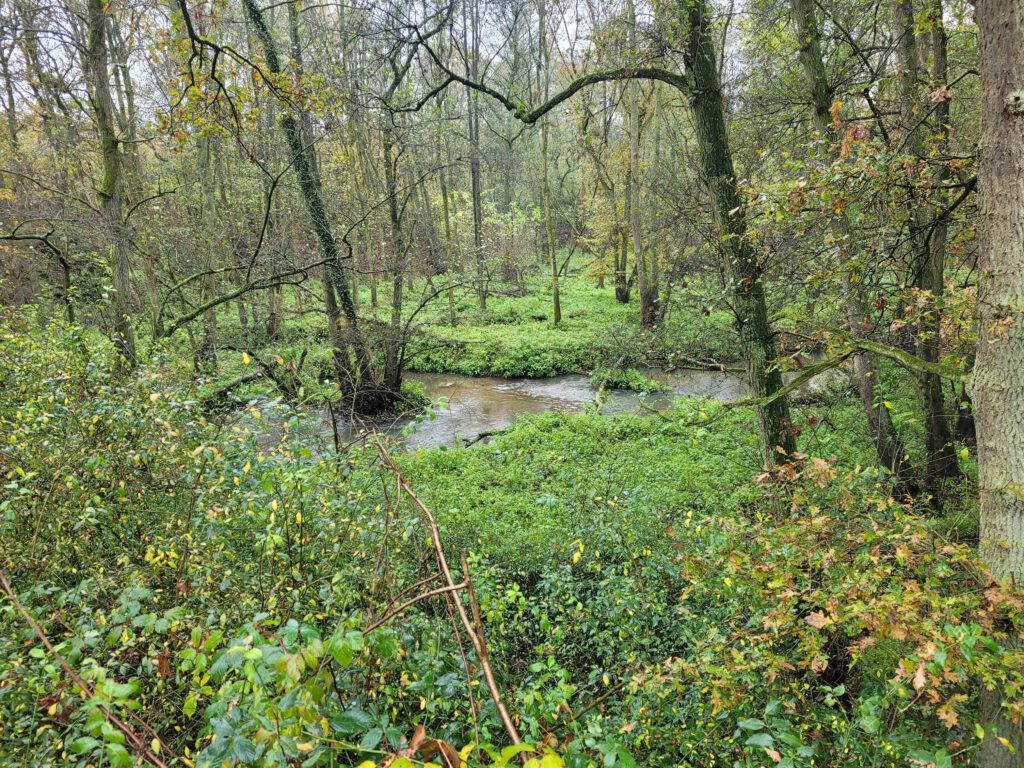
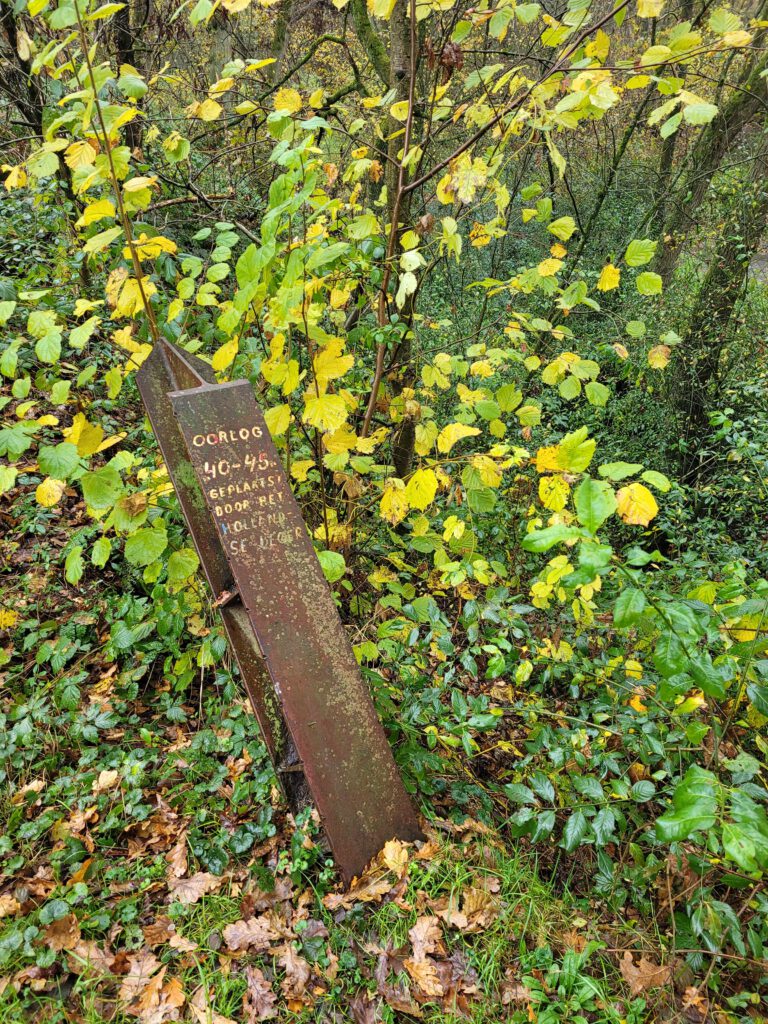

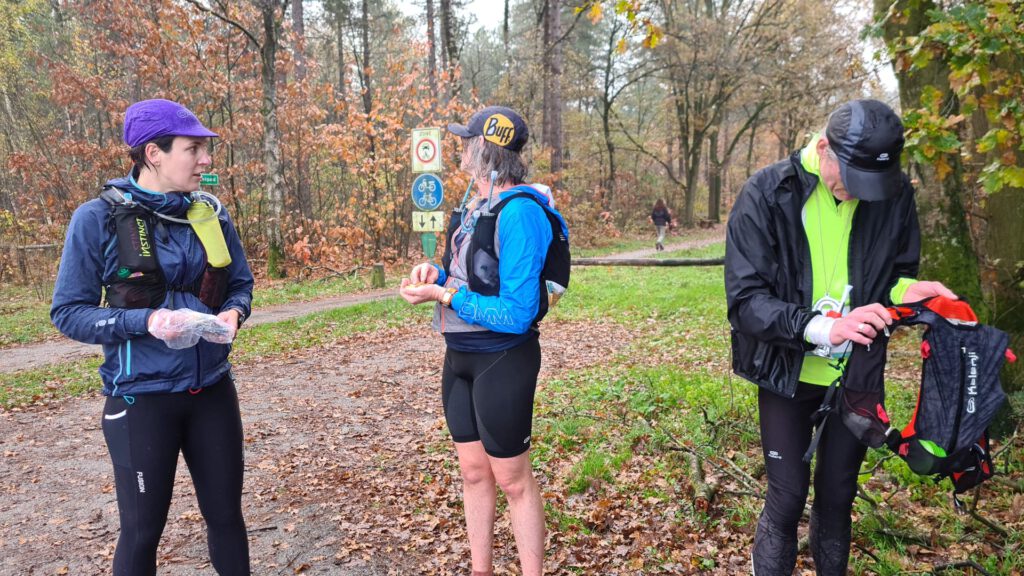
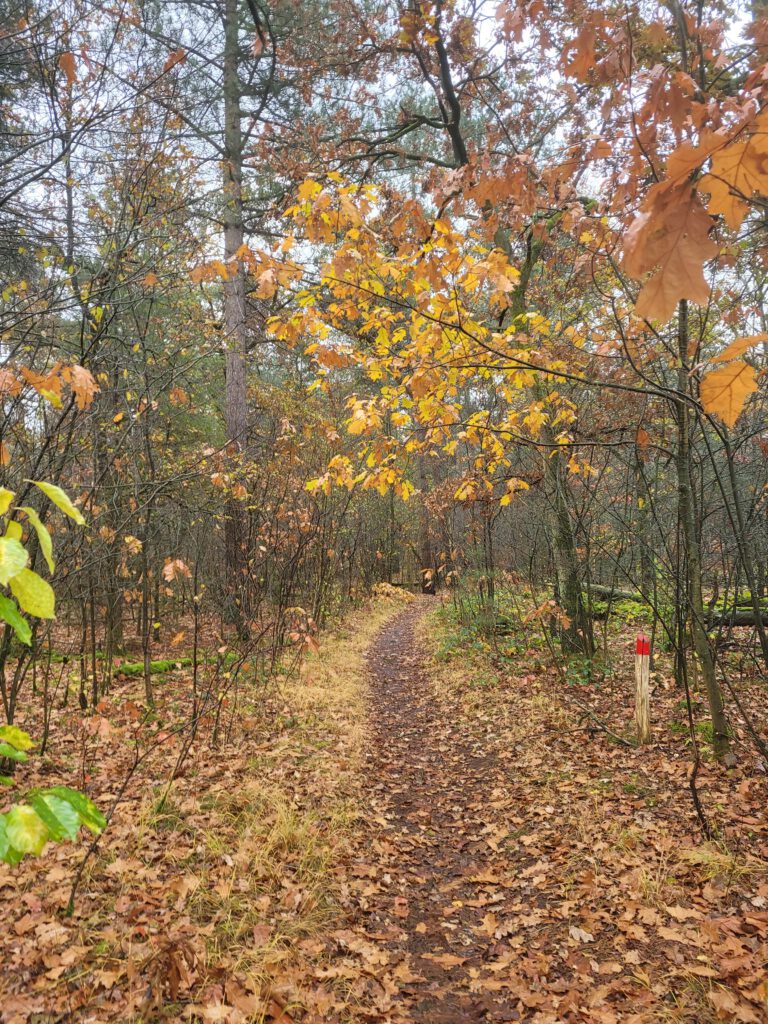
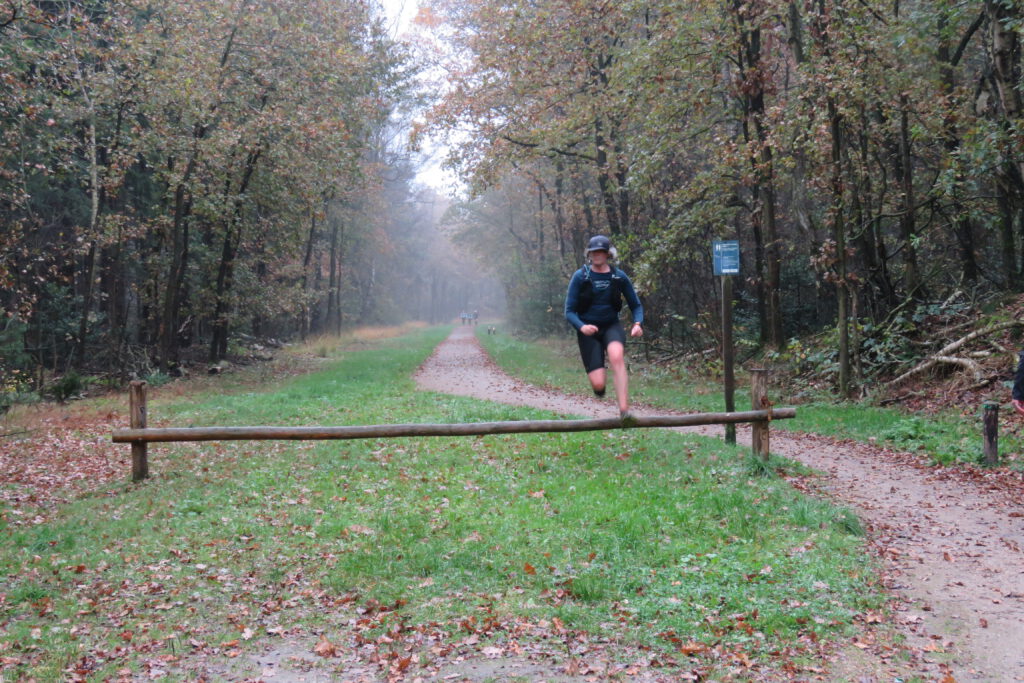
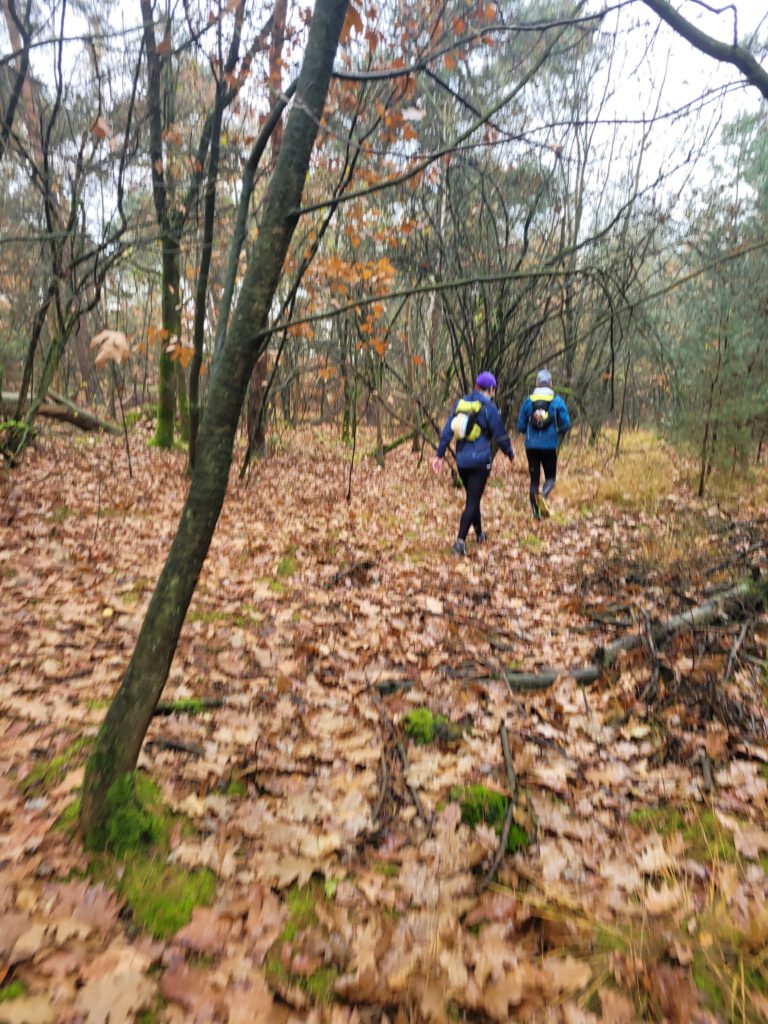
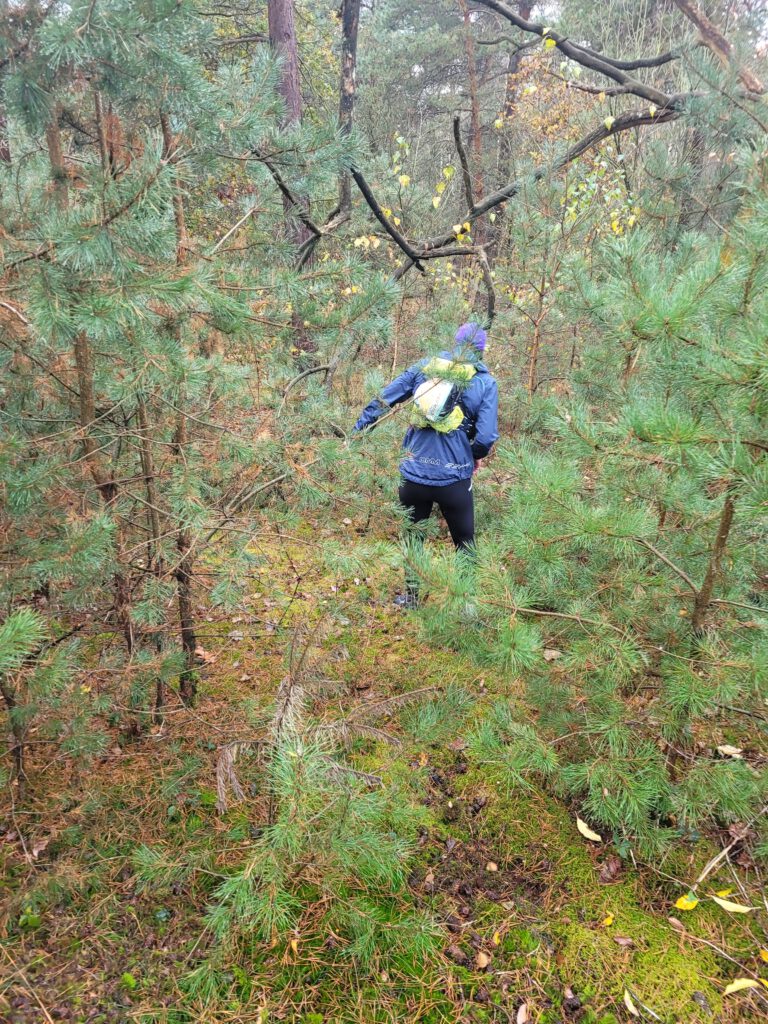
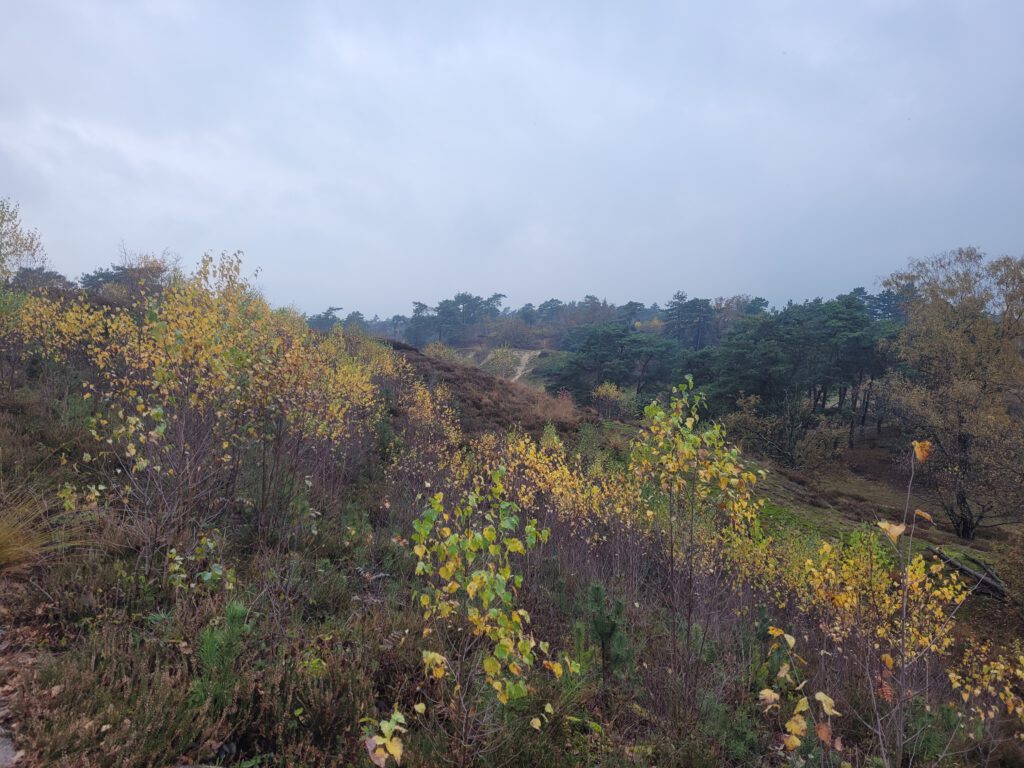

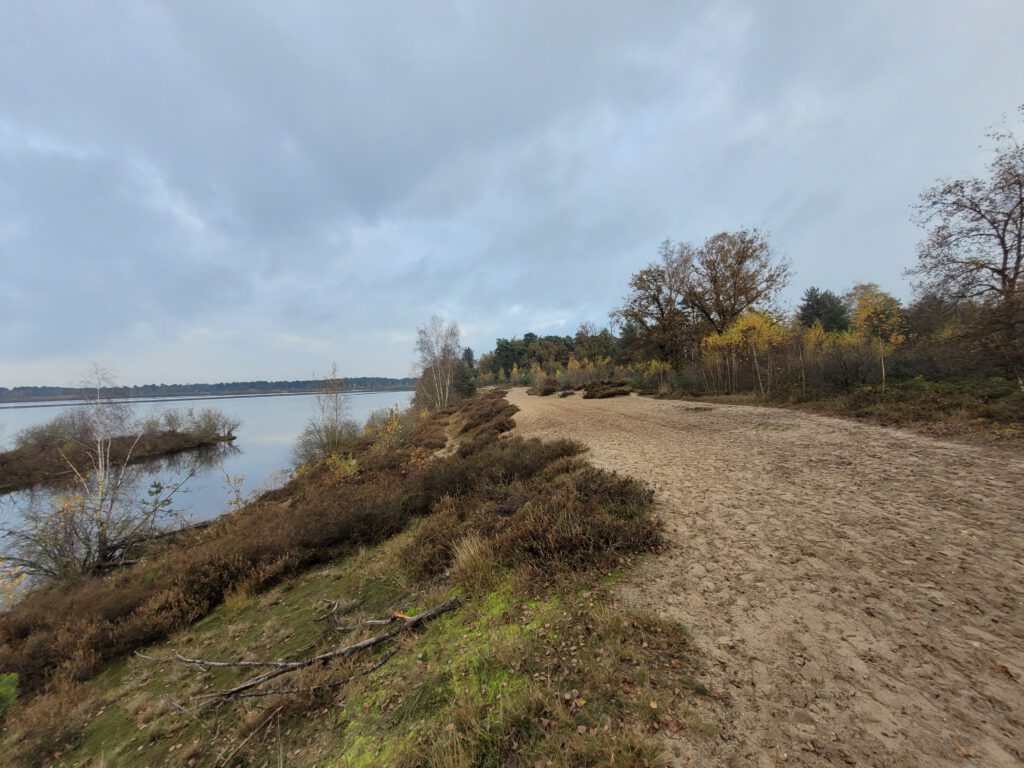
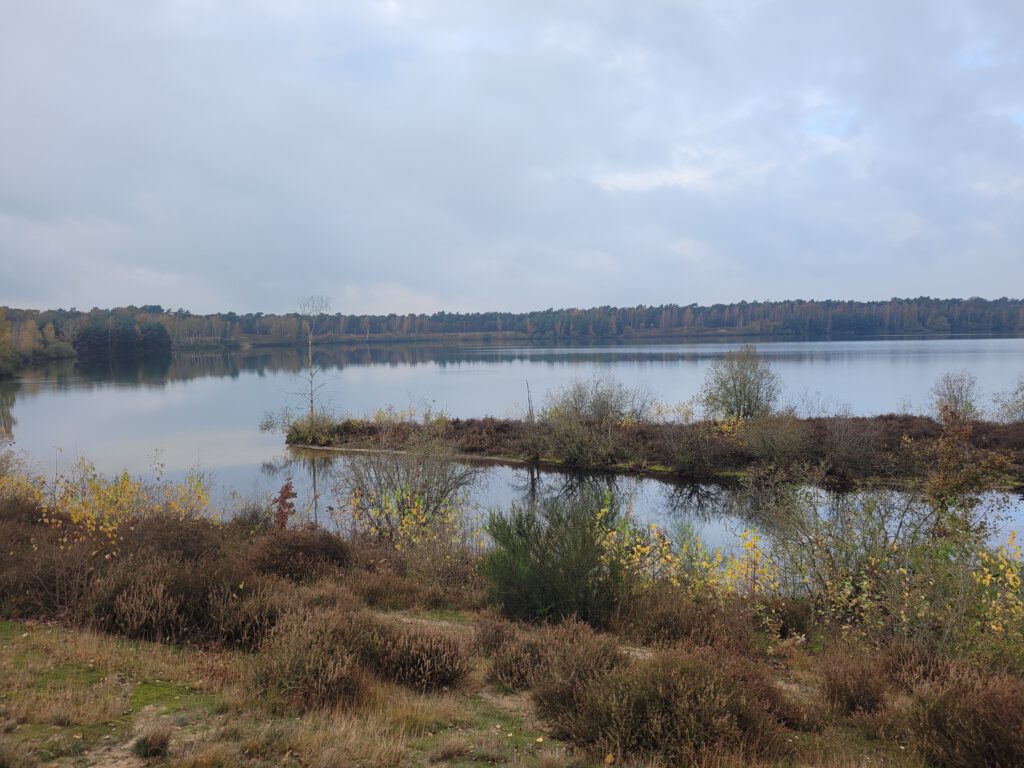
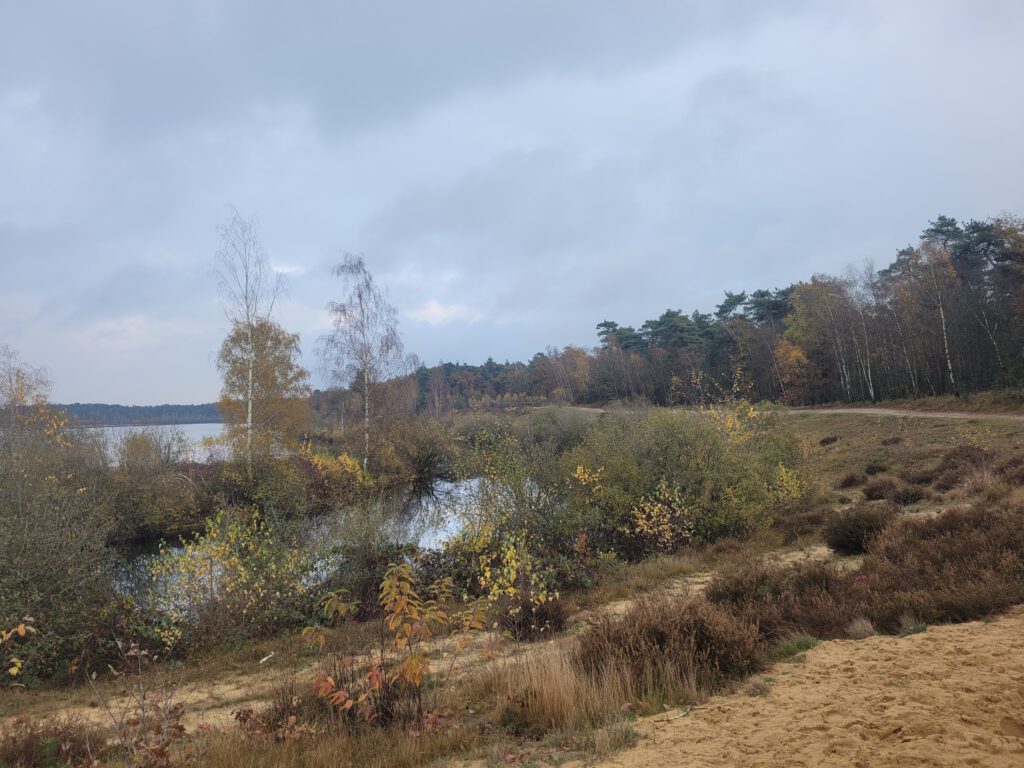
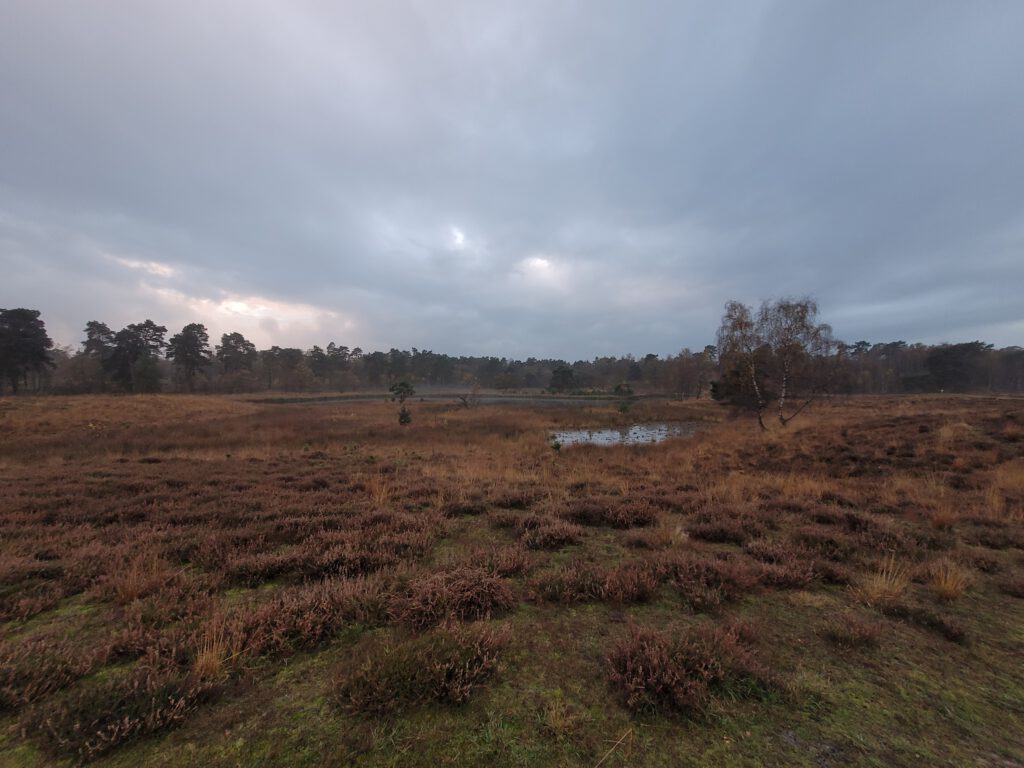
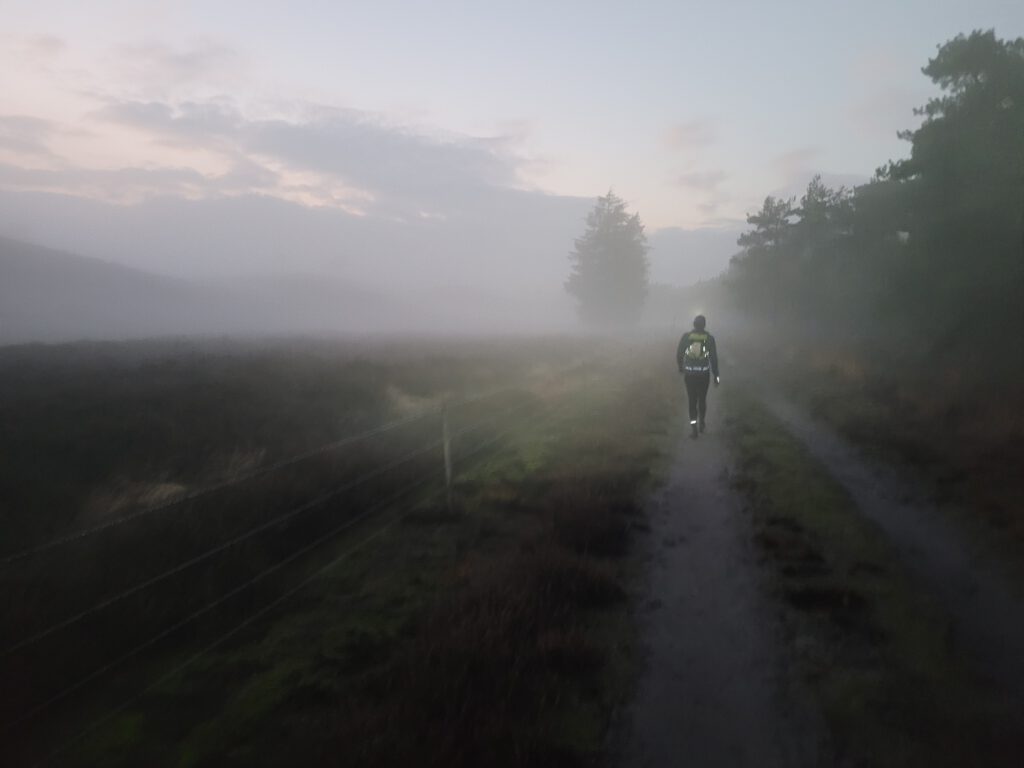

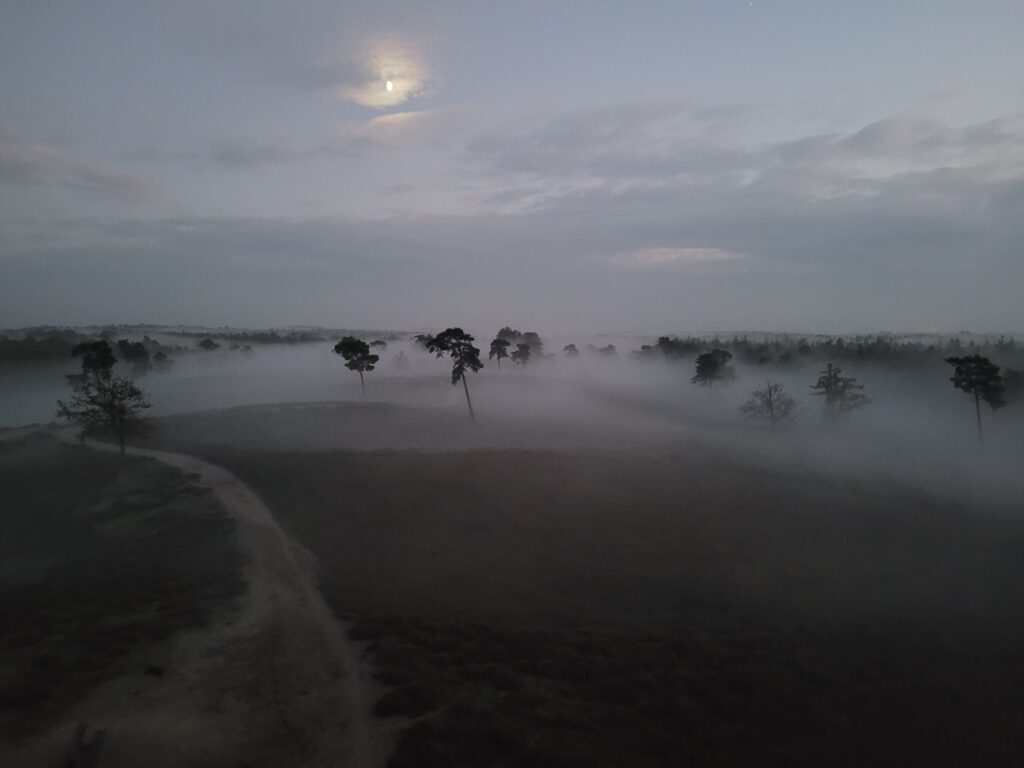
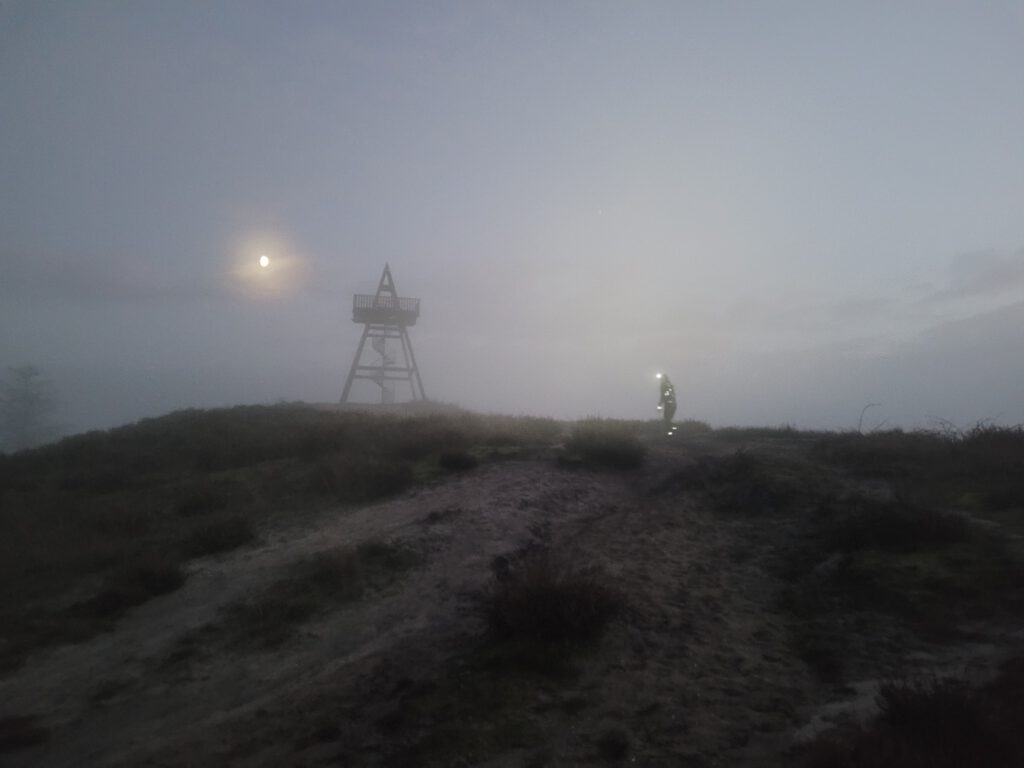
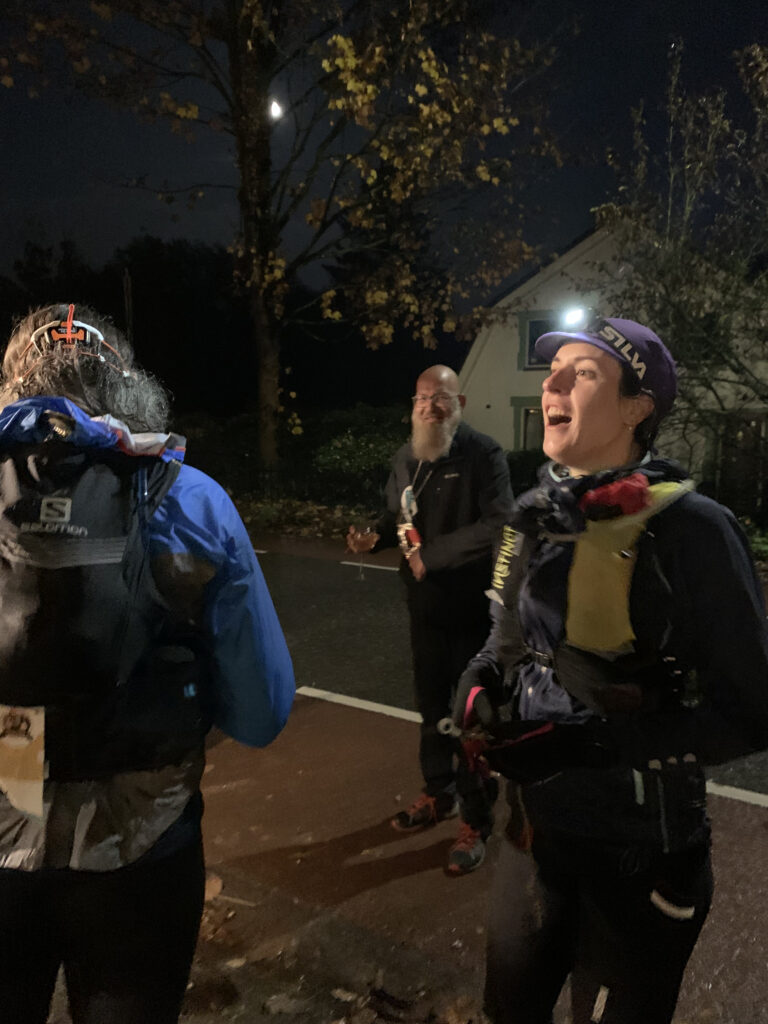
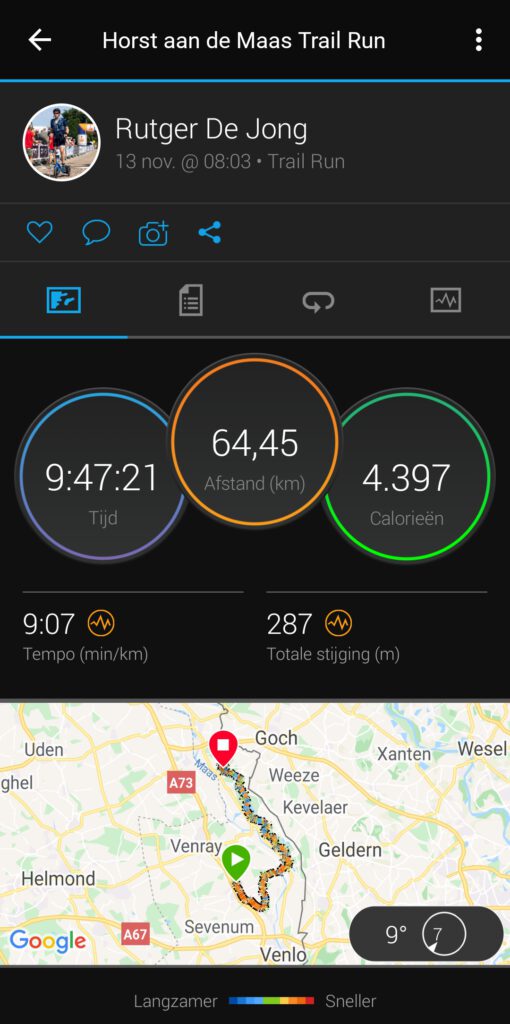
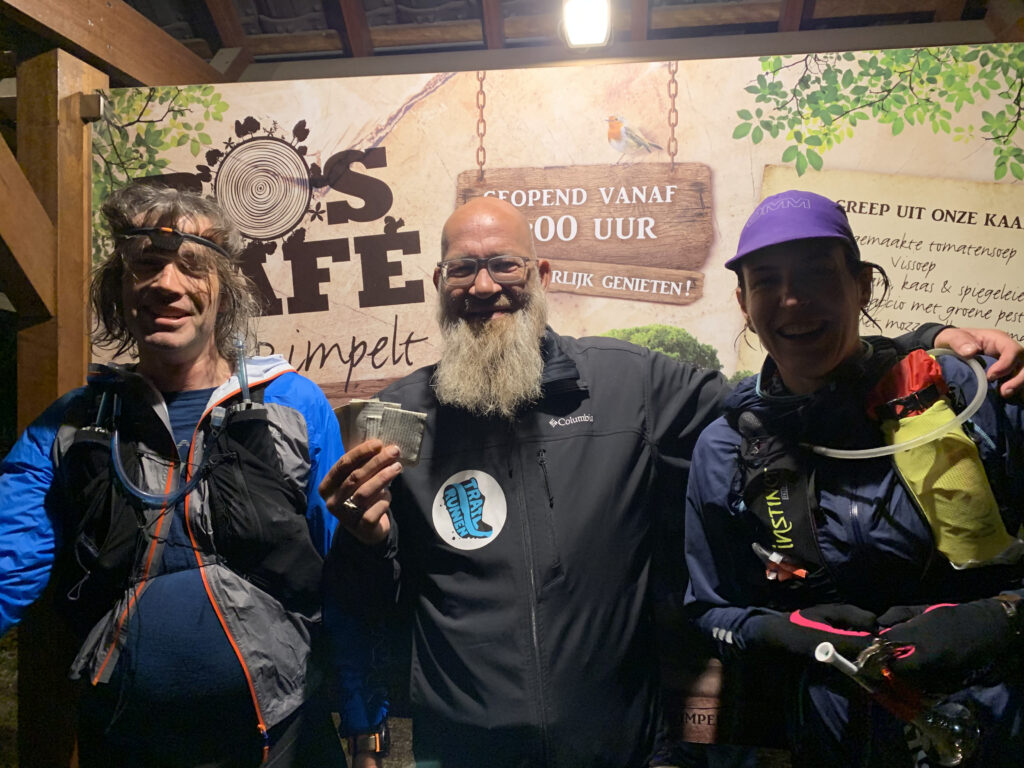
Nice report! Thanks for sharing.
It is also a fun run, a bit different from what we are used to. The social part also makes it special, hence my recommendation: don't run it alone.